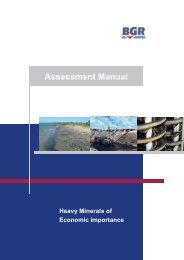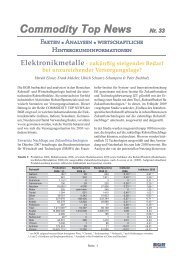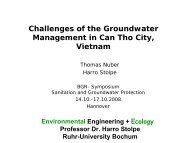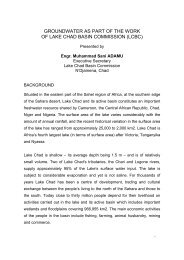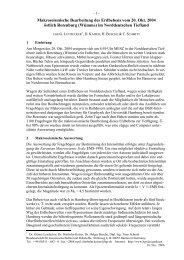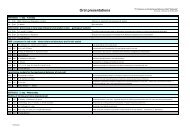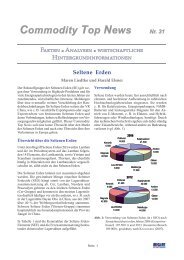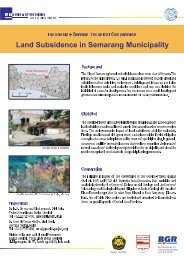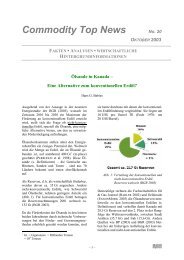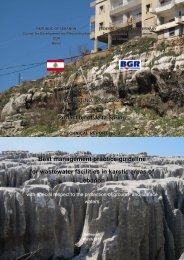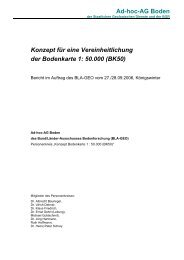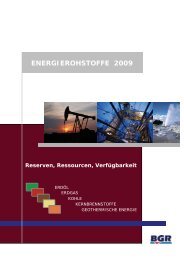THE SMOOTH SOUNDING GRAPH. A Manual for Field Work ... - BGR
THE SMOOTH SOUNDING GRAPH. A Manual for Field Work ... - BGR
THE SMOOTH SOUNDING GRAPH. A Manual for Field Work ... - BGR
Create successful ePaper yourself
Turn your PDF publications into a flip-book with our unique Google optimized e-Paper software.
29<br />
The process will be repeated: Enlarging L/2 and keeping a/2=5m fixed we<br />
get a smooth change from ρa (W) into ρa (S) . Assuming we are <strong>for</strong>ced to shift<br />
the potential electrodes again at L/2=60m the ρa (W) -value "jumps" again<br />
but now upward into the dotted Wenner-curve <strong>for</strong>ming the starting point<br />
of branch (3). At L/2=120m we just pass the curve minimum. Due to the<br />
instrument another shifting of the potential electrodes is necessary. In<br />
this position we will record crossing branches (3) and (4).The field opera-<br />
tor should not be irritated. His record is correct because it is a conse-<br />
quence from theory. As this chapter is only dealing with basic laws, prac-<br />
tical advices concerning the shifting of potential electrodes will be given<br />
later on in chapter 2 but making use of the theoretical knowledge just de-<br />
scribed.<br />
As there will be no description of instruments in this manual only one re-<br />
mark should be made concerning unpolarisable potential electrodes. The<br />
main principle is a copperstick put into a solution of copper sulphate con-<br />
tacting the earth via porous porcelain. The type used in our institute is<br />
shown in Fig.23. There are other types, f.i. having a larger bottom or be-<br />
ing porous only in the deeper part. The principle is the same and we must<br />
take care that no crust on the porcelain will interrupt the contact to the<br />
surrounding earth.



